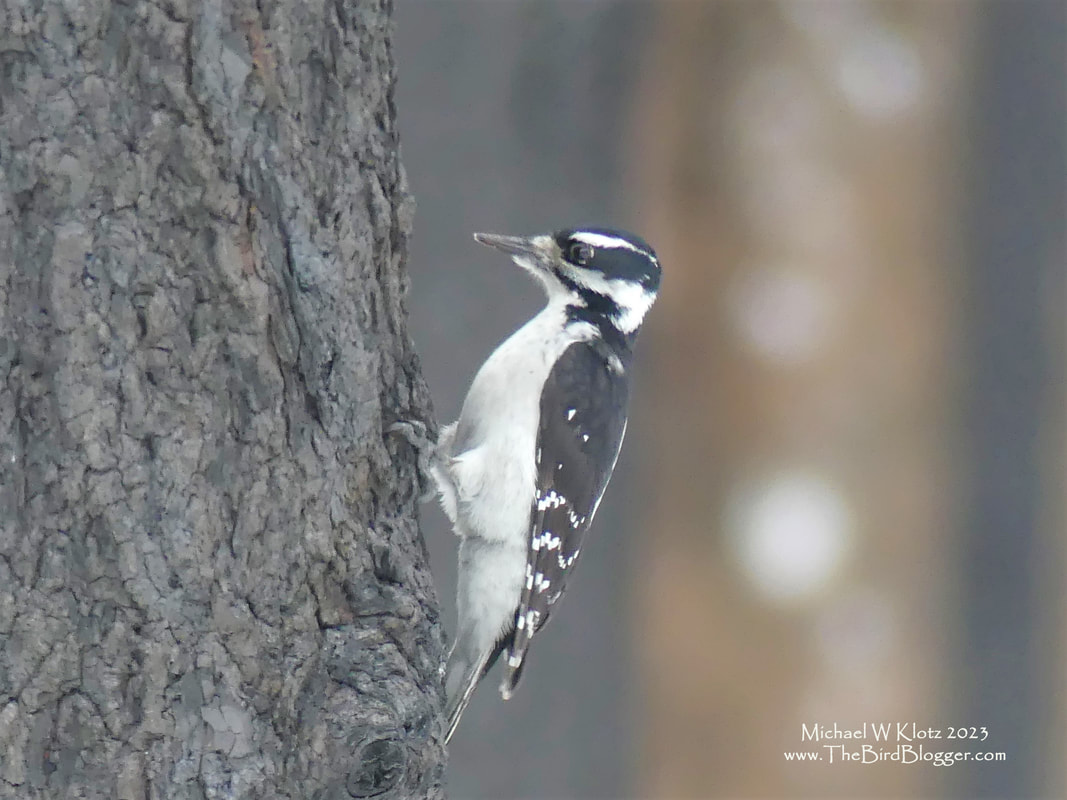On the way from Tunkwa Lake to Savanah there is a stretch of burnt out trees with a group woodpeckers including a pair of Hairy woodpeckers and two Black-backed woodpeckers. This particular bird is a female bird as it lacks the red on the back of the head. You can also tell it is not a Downy based on the size of the bill in relation to the birds head. The best way to tell is to check the outer tail feathers to make sure they are completely white have no black marks.
